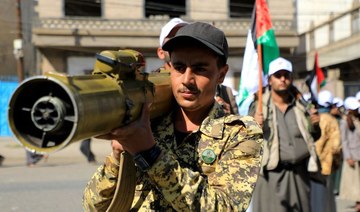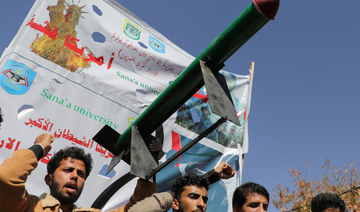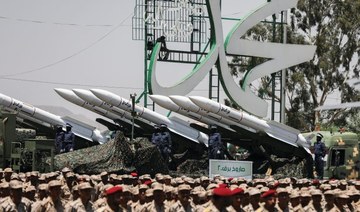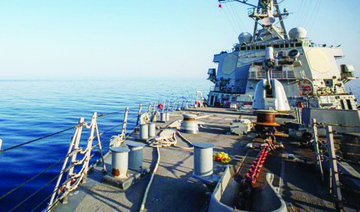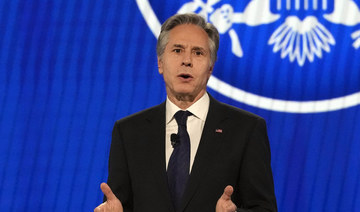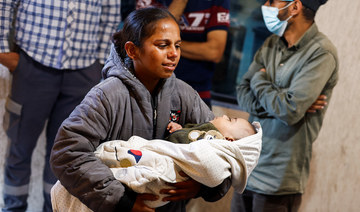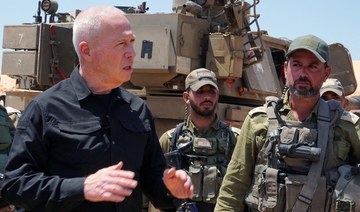JERUSALEM: The Israeli military said its “Arrow” aerial defense system successfully intercepted a surface-to-surface missile fired at Israeli territory on Friday in the area of the Red Sea.
The military statement did not provide details on the origin of the launch.
The Iran-aligned Houthi militants, who control the most populous parts of Yemen, have launched wave after wave of exploding drones and missiles at commercial vessels in the Red Sea since Nov. 19, in what they say is a response to Israel’s military operations in Gaza.
Israeli military says it intercepted surface-to-surface missile fired in area of Red Sea
https://arab.news/c2v4f
Israeli military says it intercepted surface-to-surface missile fired in area of Red Sea
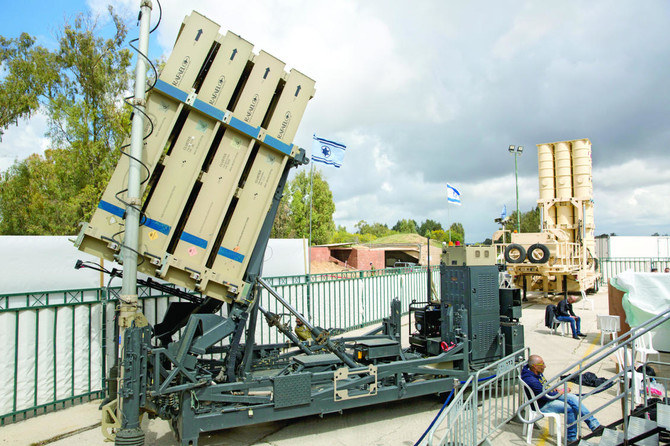
- The military statement did not provide details on the origin of the launch
Activist in Tunisia arrested as conditions for migrants and their advocates worsen
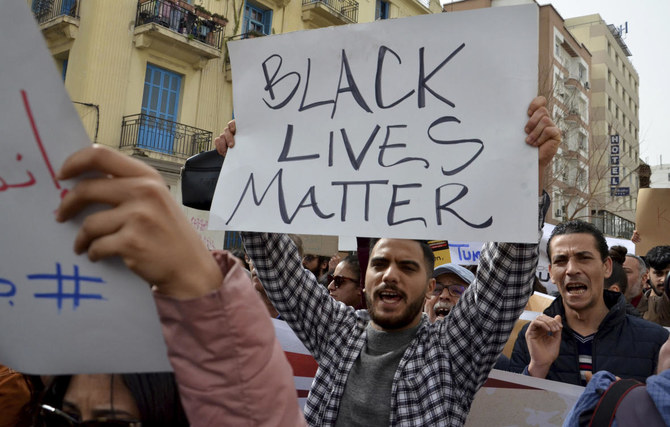
Saadia Mosbah, who is Black, was taken into custody and her home was searched as part of an investigation into the funding for the Mnemty association she runs.
She was arrested after she posted on social media condemning the racism she faced for her work from people accusing her of helping sub-Saharan African migrants, said Bassem Trifi, the president of the Tunisian League for the Defense of Human Rights.
Her arrest was the latest reflection of the problems facing migrants in Tunisia as authorities bolster efforts to police the shoreline where many embark on boats hoping to reach Europe.
In a national security council meeting focused on irregular migration, Tunisian President Kais Saied said Tuesday that associations that receive substantial foreign funds were “traitors and agents” and shouldn’t supplant the state’s role in managing migration and fighting human trafficking.
Fewer migrants have made the dangerous journey across the Mediterranean Sea this year due to weather and beefed-up border security. But human rights groups caution that efforts to curb crossings haven’t protected the tens of thousands of migrants stuck in Tunisia.
More than 80 migrants were arrested in Tunis last week after clashes with law enforcement as they cleared encampments in the capital that were “disturbing the peace,” according to Tunisia’s Radio Mosaique.
Hundreds of migrants had camped near the headquarters of the UN refugee agency and International Organization for Migration, often demanding the agencies repatriate them outside of Tunisia. Law enforcement used heavy machinery to raze their tents and then bused them outside of the city to “an unknown destination,” said Romdhane Ben Amor, a spokesman for the Tunisian Forum for Economic and Social Rights.
“Tunisia is deepening the crisis and promoting the idea that there is no solution,” Ben Amor told Radio Mosaique.
An estimated 244 migrants — most of them from outside Tunisia — have died or disappeared along the country’s Mediterranean coastline this year, including 24 whose bodies were found last week, the NGO said.
In a report based on government data released Monday, it noted that the number of migrants without papers boating across the Mediterranean had decreased as Tunisian authorities report an increasing number of interceptions. Such is the case for both migrants from Tunisia and migrants passing through the country en route to Europe.
In April, authorities directly thwarted 209 migration attempts and in total prevented more than 8,200 migrants from reaching Italy, the majority from sub-Saharan African countries. Tunisian Coast Guard have prevented more than 21,000 migrants from reaching Italy this year.
Managing migration to prevent scenes of chaos and despair along Italian shorelines has been a top priority for European leaders, including Italian Premier Giorgia Meloni, who has visited Tunis four times this year.
North African and European officials have sought to curb human trafficking and better police borders and coastlines to prevent deaths at sea. However, thousands of migrants fleeing conflict, poverty, persecution or hoping for a better life have continued to make the journey. They take boats from the coast north of Sfax, Tunisia’s second-largest city, to Italian islands such as Lampedusa, about 130 kilometers (81 miles) away.
The European Union hopes to limit migration with policies including development assistance, voluntary return and repatriation for migrants and forging closer ties with neighboring governments that police their borders. They have pledged billions of dollars over the past year to countries including Tunisia, Mauritania and Egypt to provide general government aid, migrant services and border patrols.
Though European leaders have hailed a $1.1 billion agreement with Tunisia as a template, Saied has pledged not to allow the country to become a “border guard” for Europe.
Less than one-third as many migrants have reached Italy in 2024 as had at this point last year, according to May 8 figures from Italy’s Interior Ministry. The UN refugee agency reported that more than 24,000 migrants traveled from Tunisia to Italy in the first four months of 2023 while less than 8,000 had successfully made the journey over the same time period this year.
Yemen’s Houthis say they targeted ships in Gulf of Aden, Indian Ocean
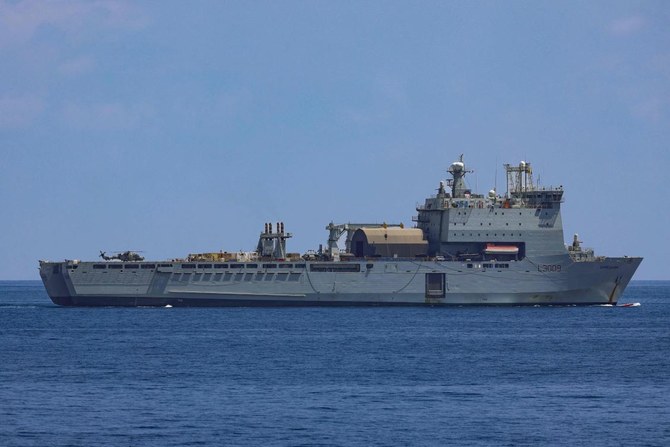
- The group also targeted the MSC VITTORIA in the Indian Ocean and again in the Gulf of Aden
DUBAI: Yemen’s Houthis on Thursday claimed two missile attacks in the Gulf of Aden on two Panama-flagged container ships that caused no damage, while also saying they targeted a ship in the Indian Ocean in a previously unreported assault.
The claims by Brig. Gen. Yahya Saree come as the tempo of the militia attacks have waned in recent weeks as they’ve been targeted by repeated airstrikes launched by a US-led coalition warship in waterways crucial to international trade. The Houthis insist their assaults will continue as long as Israel’s war on Hamas in the Gaza Strip goes on.
Saree in a prerecorded statement claimed attacks on the MSC Diego and MSC Gina. The Joint Maritime Information Center, a US-led coalition of nations operating in the Mideast, said those two missile attacks happened early Tuesday.
“Neither were hit and all crew on board are safe,” the center said. “The vessels were last reported proceeding to next port of call.”
The center added that the vessels were “likely targeted due to perceived Israeli affiliation.”
Both vessels were operating for Geneva-based Mediterranean Shipping Co., which did not immediately respond to a request for comment.
Saree did not say why it took the militia two day to claim the attacks. He also claimed the Houthis targeted the MSC Vittoria, another container ship, in the Indian Ocean. An attack on that vessel, however, has not been acknowledged by any authorities.
The Houthis say their attacks on shipping in the Red Sea and Gulf of Aden are aimed at pressuring Israel to end its war against Hamas in Gaza, which has killed more than 34,000 Palestinians there. The war began after Hamas-led militants attacked Israel on Oct. 7, killing 1,200 people and taking some 250 others hostage.
The Houthis have launched more than 50 attacks on shipping, seized one vessel and sunk another since November, according to the US Maritime Administration. Shipping through the Red Sea and Gulf of Aden has declined because of the threat.
Monitor, Iraqi group say Israel hits facilities in Syria
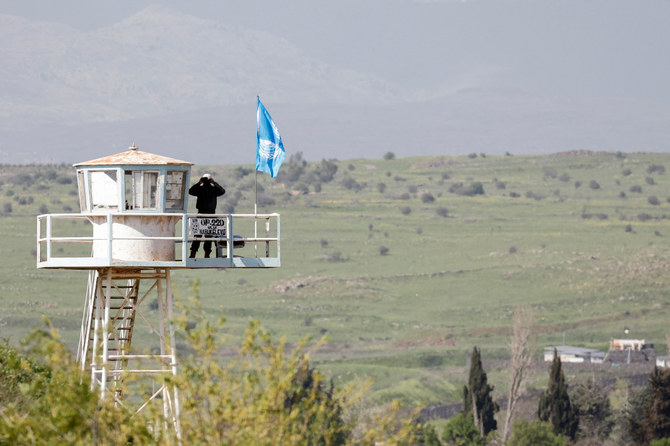
BEIRUT: Israeli strikes on Syria early Thursday targeted facilities belonging to Iraq’s Al-Nujaba armed movement, a war monitor and the pro-Iran group said, with Damascus saying an unidentified building was attacked.
Israel has carried out hundreds of strikes in Syria since the outbreak of the civil war in its northern neighbor in 2011, mainly against army positions and Iran-backed fighters.
But the strikes increased after Israel’s war with Hamas in the Gaza Strip began on October 7, when the Iran-backed Palestinian militant group launched an unprecedented assault on Israel.
The Syrian Observatory for Human Rights said “Israeli air strikes targeted a cultural center” and a “training facility” of the Iraqi Al-Nujaba movement in the Sayyida Zeinab area south of Damascus.
Three members of the group were wounded according to the Britain-based Observatory, which relies on a network of sources inside Syria.
A source within the Iraqi faction, requesting anonymity as they were not authorized to speak to the media, confirmed that a “cultural center” belonging to the group was destroyed in the “Israeli” attack, but reported no casualties.
Al-Nujaba does “not have a declared military base in Syria,” the source added.
Syria’s defense ministry said that “at around 3:20 am today, the Israeli enemy launched an air attack from the direction of the occupied Syria Golan Heights targeting a building in the Damascus countryside.”
The attack caused “some material damage,” said the statement carried by state media, adding that air defense systems shot down some of the missiles.
The Sayyida Zeinab area is home to an important Shiite Muslim shrine that is protected by pro-Iran groups, including Lebanon’s Hezbollah, alongside the Syrian army, according to the Observatory.
The Al-Nujaba movement is part of a pro-Iran alliance in Iraq that Washington has blamed for numerous attacks on its forces.
Israel rarely comments on individual strikes on Syria, but has repeatedly said it will not allow its arch-enemy Iran to expand its presence there.
An April 1 raid blamed on Israel levelled Tehran’s consulate in Damascus and killed seven Iranian Revolutionary Guards, two of them generals.
That strike prompted Iran to launch a first-ever direct missile and drone attack against Israel on April 13-14 that sent regional tensions spiralling.
‘Constant terror’ in key Darfur city as fighting closes in
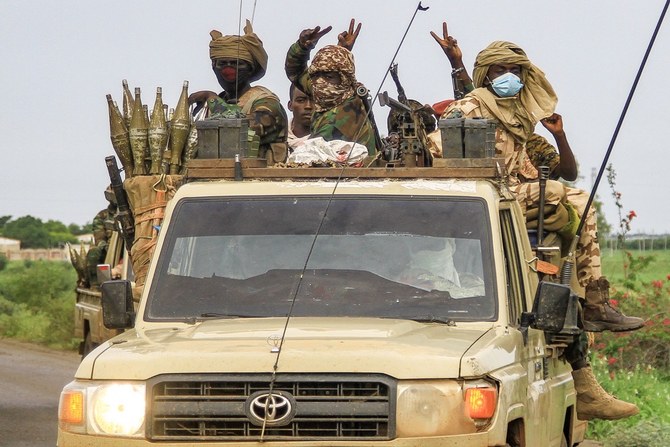
- Experts have warned Sudan is at risk of breaking apart
PORT SUDAN: Sudanese shop owner Ishaq Mohammed has been trapped in his home for a month, sheltering from violence in El-Fasher, the last major city in the country’s vast Darfur region not under paramilitary control.
For more than a year, Sudan has suffered a war between the army, headed by the country’s de facto leader Abdel Fattah Al-Burhan, and the paramilitary Rapid Support Forces (RSF), commanded by his former deputy Mohamed Hamdan Dagalo.
Experts have warned the northeast African country is at risk of breaking apart.
According to the United Nations, Sudan “is experiencing a humanitarian crisis of epic proportions,” with famine threatening and more than 8.7 million people uprooted — more than anywhere else in the world.
Among the war’s many horrors, Darfur has already seen some of the worst. Now, experts and residents are bracing for more.
“We’re living in constant terror,” Mohammed told AFP by telephone, as the UN, world leaders and aid groups voice fears of carnage in the North Darfur state capital of 1.5 million people.
“We can’t move for the bombardments,” Mohammed said.
The RSF has seized four out of five state capitals in Darfur, a region about the size of France and home to around one quarter of Sudan’s 48 million people.
“We’re under a total siege,” another resident, Ahmed Adam, told AFP in a text message that got through despite a near-total communications blackout in Darfur.
“There’s no way in or out of the city that’s not controlled by the RSF,” he said.
For months, El-Fasher was protected by a fragile peace.
But unrest has soared since last month when the city’s two most powerful armed groups — which had helped to keep the peace there — pledged to fight alongside the army.
Since then, El-Fasher and the surrounding countryside have seen “systematic burning of entire villages in rural areas, escalating air bombardments... and a tightening siege,” according to Toby Harward, the UN’s deputy humanitarian coordinator for Sudan.
At least 23 communities in North Darfur have been burned in apparent arson, Yale University’s Humanitarian Research Lab found in a report last week.
The war’s overall death toll, however, remains unclear, a factor “that captures just how invisible and horrific this war is,” Tom Perriello, US special envoy for Sudan, told a congressional committee on May 1.
While figures of 15,000-30,000 have been mentioned, “some think it’s at 150,000,” Perriello said.
UN experts reported up to 15,000 people killed in the West Darfur capital El-Geneina alone.
Members of the non-Arab Massalit ethnic group in El-Geneina last year were targeted for killing and other abuses by the RSF and allied militias, forcing an exodus to neighboring Chad, which the UN says is hosting more than 745,000 people from Sudan.
The International Criminal Court, currently investigating ethnic-based killings primarily by the RSF in Darfur, says it has “grounds to believe” both sides are committing atrocities in the war.
As El-Fasher is home to both Arab and African communities, an all-out battle for control of the city causing massive civilian bloodshed “would lead to revenge attacks across the five Darfur states and beyond Darfur’s borders,” said Harward.
In late April, United States ambassador to the UN Linda Thomas-Greenfield warned that El-Fasher “is on the precipice of a large-scale massacre.”
Eyewitnesses report fighting “is now inside” the nearby Abu Shouk camp, established 20 years ago for people displaced by ethnic violence committed by the Janjaweed militia, which led to ICC war crimes charges.
The Janjaweed later evolved into the RSF.
“Everyone who hasn’t managed to leave is trapped at home,” camp resident Issa Abdelrahman told AFP.
“People are running out of food, and no one can get to them.”
According to UN experts, the RSF has repeatedly besieged and set fire to villages and displacement camps in Darfur.
Their siege of El-Fasher has halted aid convoys and commercial trade, Harward said.
Shortages have also hit the El-Fasher Southern Hospital — the city’s only remaining medical facility, where personnel are “completely exhausted,” a medical source told AFP.
Requesting anonymity for fear of both sides’ well-documented targeting of medics, the source said “some doctors haven’t left the hospital in over a month,” tirelessly treating gunshot wounds, bombardment injuries and child malnutrition.
The Darfur region was already facing widespread hunger, but now “people are resorting to consuming grass and peanut shells,” according to Michael Dunford, the World Food Programme’s regional director for Eastern Africa.
Yet it is difficult for them to flee.
UNICEF Executive Director Catherine Russell said encirclement of El-Fasher by armed groups and restrictions on movement along key roads “are limiting families from leaving.”
Early this year the RSF declared victories across Sudan, but the army has since mounted defenses in key locations.
The RSF has for months threatened an attack on El-Fasher but has held off, in large part due to the locally brokered truce.
They also seem to have been deterred by “heightened international demands and warnings,” according to Amjad Farid, a Sudanese political analyst and former aide to ex-civilian prime minister Abdalla Hamdok.
But these warnings are “falling on deaf ears,” Harward says.
With the US having announced an imminent resumption of peace talks in Saudi Arabia, Farid said the RSF has focused anew on El-Fasher.
“These are negotiations the militia cannot enter from a position of weakness,” Farid told AFP.
Palestinians flee chaos and panic in Rafah after Israel’s seizure of border crossing
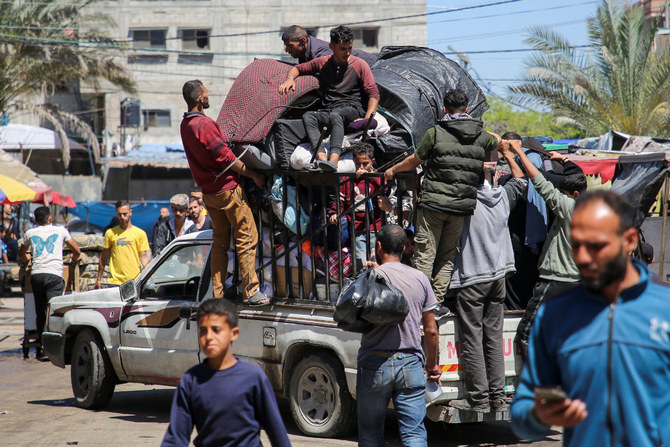
- The main hospital has shut down, leaving little care for people suffering from malnutrition, illnesses and wounds
- Rafah had 250,000 residents before the war. Its population had ballooned to some 1.4 million as people from across Gaza fled there
RAFAH, Gaza Strip: Tens of thousands of displaced and exhausted Palestinians have packed up their tents and other belongings from Rafah, dragging families on a new exodus.
The main hospital has shut down, leaving little care for people suffering from malnutrition, illnesses and wounds.
And with fuel and other supplies cut off, aid workers have been scrambling to help a population desperate after seven months of war.
As the possibility of a full-scale invasion looms, Gaza’s overcrowded southernmost city has been thrown into panic and chaos by Israel’s seizure of the nearby border crossing with Egypt.
Families uprooted multiple times by the war were uncertain where to go: to the half-destroyed city of Khan Younis, to points even farther north, or to an Israeli-declared “humanitarian zone” in Gaza already teeming with people with little water or supplies?
The past three days, streams of people on foot or in vehicles have jammed the roads out of Rafah in a confused evacuation, their belongings piled high in cars, trucks and donkey carts. All the while, Israeli bombardment has boomed and raised palls of smoke.
“The war has caught up with us even in schools. There is no safe place at all,” said Nuzhat Jarjer. Her family packed on Wednesday to leave a UN school-turned-shelter in Rafah that was rapidly emptying of the hundreds who had lived there for months.
Rafah had 250,000 residents before the war. Its population had ballooned to some 1.4 million as people from across Gaza fled there. Nearly every empty space was blanketed with tent camps, and families crammed into schools or homes with relatives. Like the rest of Gaza’s population, they have been largely reliant on aid groups for food and other basics of life.
Israel on Monday issued evacuation orders for eastern parts of the city, home to some 100,000. It then sent tanks to seize the nearby Rafah crossing with Egypt, shutting it down.

It remains uncertain whether Israel will launch an all-out invasion of Rafah as international efforts continue for a ceasefire. Israel has said an assault on Rafah is crucial to its goal of destroying Hamas after the militant group’s Oct. 7 attack on southern Israel that left 1,200 dead and 250 as hostages in Gaza.
The United States, which opposes a Rafah invasion, has said Israel has not provided a credible plan for evacuating and protecting civilians. The war has killed over 34,800 Palestinians, according to Gaza health officials, and has driven some 80 percent of Gaza’s population of 2.3 million Palestinians from their homes.
For now, confusion has reigned. Fearing a greater assault, Palestinians fled districts other than the eastern areas they were ordered to leave. Tens of thousands are estimated to have left, according to a UN official who spoke on condition of anonymity because agencies were still trying to determine precise figures.
Tent camps in some parts of Rafah have vanished, springing up again further north along main roads. New camps have filled streets, cemeteries and the beach in the central Gaza town of Deir Al-Balah, 15 kilometers (10 miles) north, as people flowed in, said Ghada Alhaddad, who works there with the aid group Oxfam, speaking to a briefing by several humanitarian workers.

Others made their way to Khan Younis, much of which was destroyed in a months-long Israeli ground assault.
Suze van Meegen, head of operations for the Norwegian Refugee Council in Palestine, said the Rafah district where she is based “feels like a ghost town.”
The Israeli military told those evacuating to go to a “humanitarian zone” it declared in Muwasi, a nearby rural area on the Mediterranean coast. The zone is already packed with some 450,000 people, according to the UN Few new facilities appear to be prepared, despite the military’s announcements that tents, medical centers and food would be present.
The ground is covered in many places with sewage and solid waste, since there are few sanitation facilities, aid workers say. Clean water is lacking and dehydration is a major problem, with temperatures some days already reaching 100 degrees Fahrenheit (38 Celsius).
The water quality is “horrifically bad. We tested some of the water and the fecal content … is incredibly high,” said James Smith, a British emergency doctor volunteering at the European General Hospital in nearby Khan Younis. Acute jaundice is rampant — and probably caused by hepatitis, but there’s no capabilities to test, he said.
The newly arrived struggle to find tents because of an extreme shortage among aid groups.
Before his family left Rafah to the zone, Iyad Al-Masry said he had to sell food received from aid groups to buy a tent for the equivalent of nearly $400.
His family set up their tent in Muwasi, smoothing the dirt ground before setting down a cradle to rock an infant in. Al-Masri said he has been searching for water and can’t afford the three shekels — a little less than $1 — that sellers charge for a gallon of drinking water.
“We want to eat … We are just waiting for God’s mercy,” he said.
Nick Maynard, a surgeon with Medical Aid for Palestinians who left Gaza on Monday, said two teenage girls who had survivable injuries died last week because of complications from malnutrition.
“They get this vicious cycle of malnutrition, infection, wounds breaking down, more infection, more malnutrition,” said Maynard.
The number of children in Rafah who have lost one or more limbs is “staggering,” said Alexandra Saieh from Save The Children. “These people cannot just pick up and relocate.”
Rafah’s main Youssef Al-Najjar Hospital evacuated on Tuesday. Smith said staff and patients rushed out even though they weren’t under evacuation orders because they feared Israeli troops would raid, just as they did hospitals in northern Gaza and Khan Younis, which were left decimated.
Israel claims Hamas used the hospitals for military purposes, an accusation Hamas and Gaza health officials deny.
Israeli tank shells Wednesday hit about 300 meters (yards) from the Kuwaiti Hospital, one of the few facilities still operating, and wounded several children, according to hospital officials.
The closure of Rafah crossing and the nearby Kerem Shalom crossing from Israel has cut off the entry of food, supplies, and fuel for aid trucks and generators. Aid groups warn they have only a few days of fuel before humanitarian operations and hospitals around Gaza begin to shut down.
Israel said Wednesday it reopened Kerem Shalom, which was shut after Hamas mortars killed four Israeli soldiers nearby, but aid groups said no trucks were entering the Gaza side. Trucks let through from Israel must be unloaded and the cargo reloaded onto trucks in Gaza, but no workers in Gaza can get to the facility to do so because it is too dangerous, the UN says.
Palestinian workers trying to reach the border crossing Wednesday were shot at, and several were wounded, the Israeli military said. It did not specify who opened fire but said it was investigating. Hamas also shelled in the area of Kerem Shalom on Wednesday, saying it was targeting nearby troops.
The UN’s World Food Program has been cut off from its Gaza food warehouse near the Rafah crossing, its deputy executive director Carl Skau said. It procured another warehouse in Deir Al-Balah, but it’s empty until crossings reopen, he said.
Van Meegen, of the Norwegian Refugee Council, said without more supplies, “how do we even begin to prioritize the dribble of humanitarian aid we have here when almost every single person is being forced to depend on it?”



